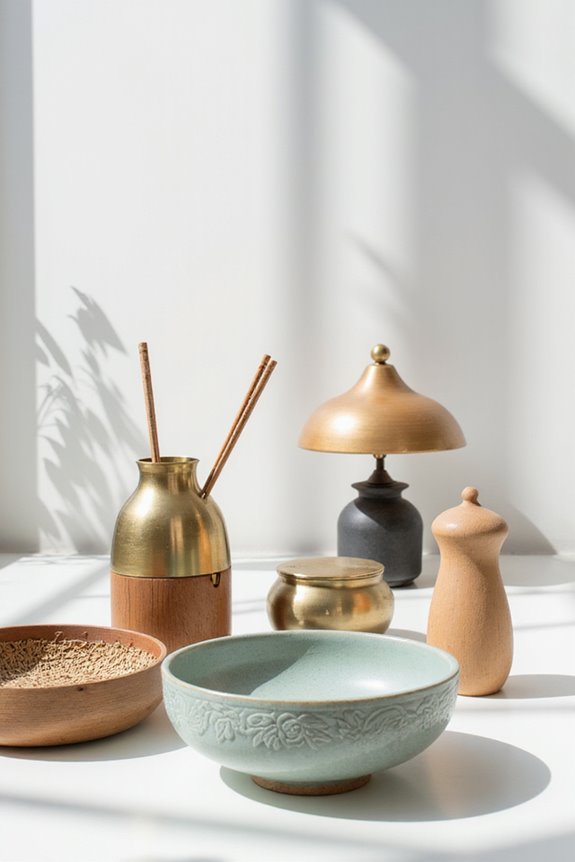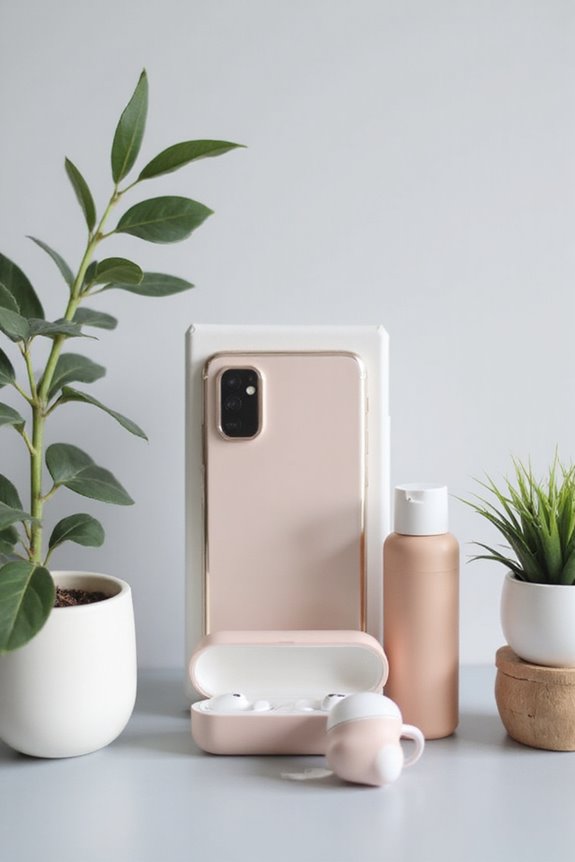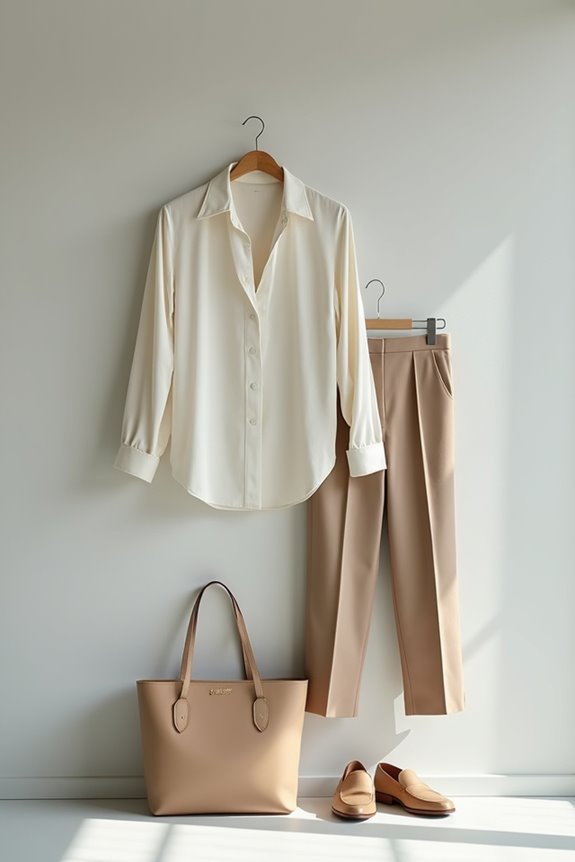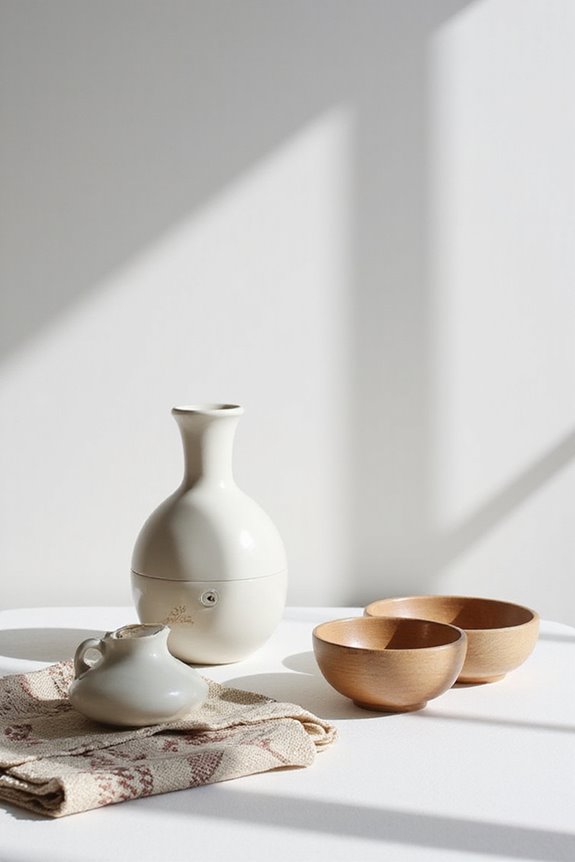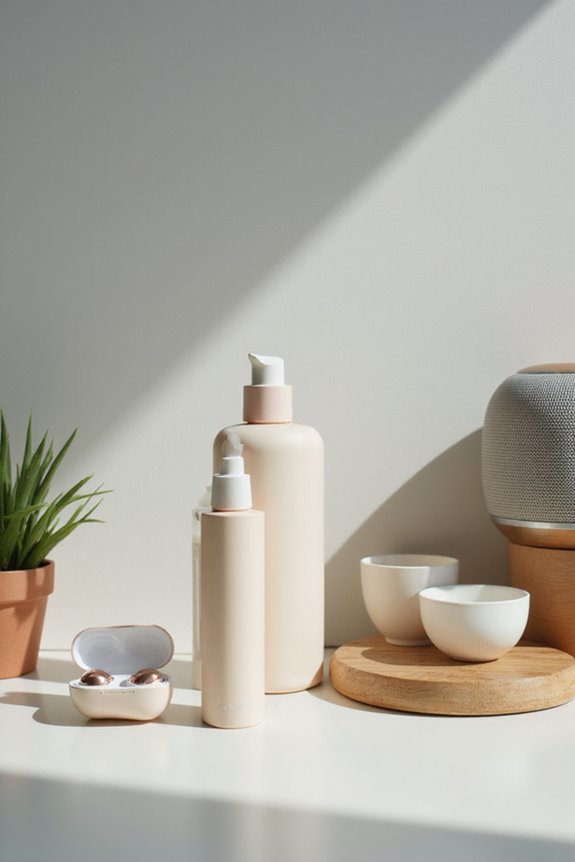Korean home accessories include a variety of unique items that showcase traditional craftsmanship and modern design. We often find materials like mother-of-pearl inlay and hanji paper, which enhance both the aesthetics and functionality of home decor. Color plays a significant role, with the traditional palette symbolizing various virtues. Lighting techniques, such as paper lanterns, create ambiance while honoring cultural roots. Continuing to explore this topic reveals more insights into the market trends and evolving interpretations of these accessories.
Key Takeaways
- Korean home accessories often feature traditional materials like mother-of-pearl inlay, hanji paper, and ox horn, reflecting cultural craftsmanship.
- Colors and patterns in Korean decor embody significance, with the traditional palette symbolizing virtues and harmonizing social status.
- Lighting elements, such as paper lanterns and modern hanji lamps, create a warm ambiance and honor historical traditions.
- Crafts and artisans play a crucial role in preserving Korean culture, recognized as part of the nation’s intangible heritage.
- Modern interpretations of traditional accessories include sustainable materials and fresh designs while maintaining cultural integrity.
Traditional Materials Used in Korean Home Accessories
In our exploration of traditional materials used in Korean home accessories, it’s essential to recognize that a variety of unique elements contribute to the aesthetic and functional qualities of these items. For instance, mother-of-pearl inlay, known as najeonchilgi, is a labor-intensive craft utilizing iridescent shells to adorn furniture and decorative objects. Hanji paper, made from mulberry bark, offers remarkable durability and insulation, commonly used in screens and lamps. Meanwhile, ox horn panels often accentuate these accessories with lustrous textures. Lacquer techniques, such as Juchil, enhance the beauty and protect wooden items like paulownia furniture. Additionally, natural fibers, as seen in bamboo crafts and textiles, emphasize harmony with nature, providing both utility and artistry within Korean interiors.
Cultural Significance of Colors and Patterns
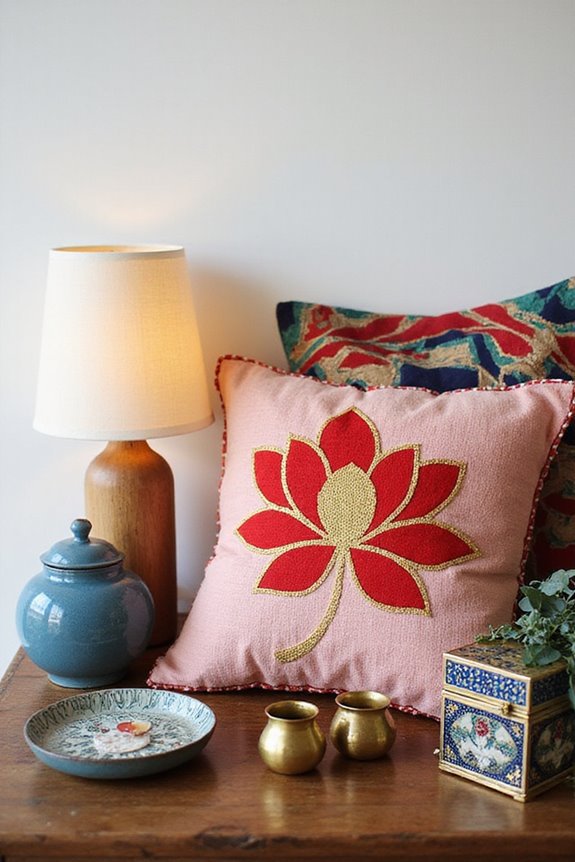
While examining the cultural significance of colors and patterns in Korean home accessories, we can see that these elements are deeply rooted in the nation’s history and belief system. The traditional color palette, known as Obangsaek, comprises five primary colors: blue, red, yellow, white, and black, each representing distinct virtues and elements. For example, blue symbolizes creativity, while red signifies passion and good fortune. Pattern harmony is also essential, reflecting social status and balancing Yin-Yang energies within designs. Dancheong, a form of decorative coloring, combines these colors, showcasing both artistic and practical applications. Through their associations with nature and seasons, these colors and patterns impart significant meanings, enhancing the cultural richness of Korean home decor.
Lighting Techniques in Korean Decor
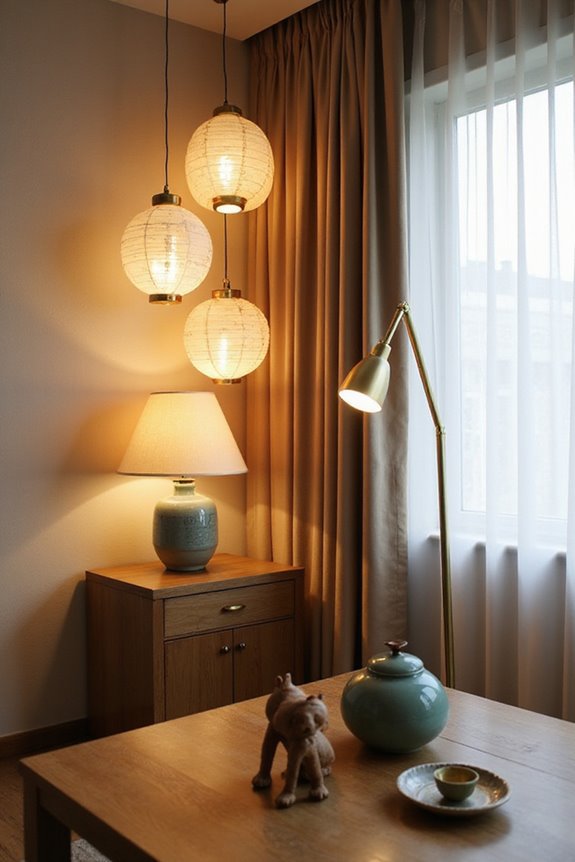
Lighting techniques in Korean decor not only serve functional purposes but also reflect the profound cultural heritage that informs modern design practices. Traditional lighting elements, such as chorong lanterns and paper lanterns, contribute to the warm ambiance often sought in homes. Today, designers incorporate these traditional styles into sustainable designs, using materials like hanji paper and PLA. For example, modern hanji paper lamps provide soft lighting while honoring their historical roots. Innovative designers, such as Henry Kim, skillfully blend traditional techniques with contemporary aesthetics, creating unique lighting solutions. Overall, the evolution of Korean lighting illustrates a commitment to both cultural integrity and environmental responsibility, allowing us to enjoy beautifully illuminated spaces while respecting our heritage.
The Importance of Crafts and Artisans
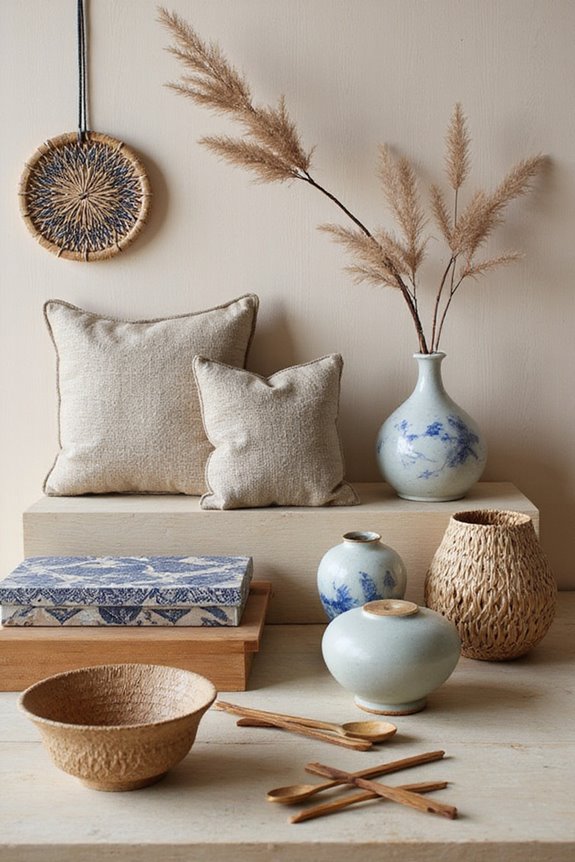
Crafts and artisans play an essential role in preserving and promoting Korean culture, as their skills and creations reflect the nation’s rich heritage and history. Many traditional crafts, recognized as part of Korea’s National Intangible Heritage, demonstrate significant craft preservation efforts. These artisans, often operating small workshops, guarantee that ancestral techniques are maintained while adapting to contemporary tastes. The Craft Culture Industry Promotion Act of 2016 illustrates government support for artisan recognition, underlining the sector’s importance. In addition, the handicraft industry, valued at over KRW 2 trillion, highlights the economic impact and cultural significance of these traditional crafts. By promoting these artisans and their creations, we contribute to a thriving cultural identity and economic growth, securing a legacy for future generations.
Modern Interpretations of Traditional Elements
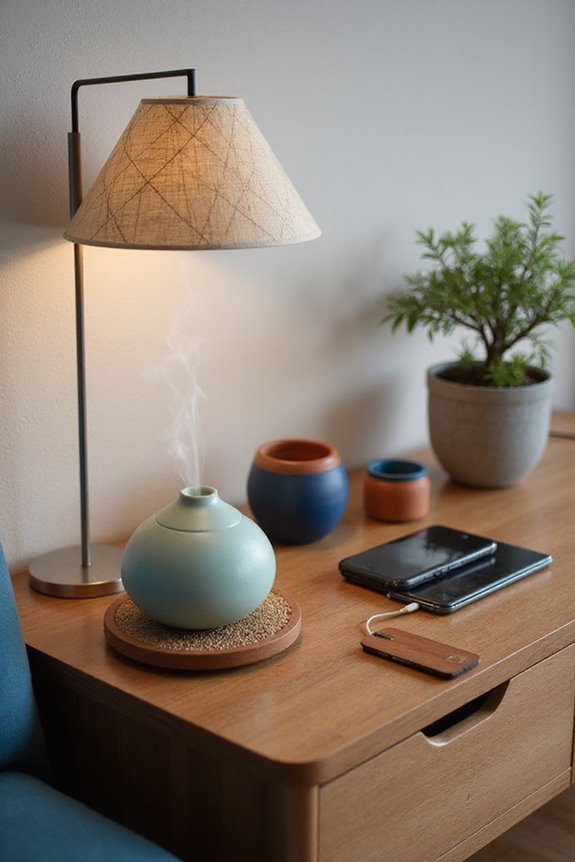
Korean home design increasingly reflects a modern interpretation of traditional elements, blending heritage with contemporary aesthetics. We’re witnessing the integration of sustainable materials like reclaimed wood and bamboo, emphasizing natural beauty within modern aesthetics. Traditional designs, such as hanji screens, are updated with innovative materials, while low seating arrangements revive the comfort of past styles in fresh fabrics. Furthermore, we notice color palettes shifting towards neutral tones, accented by vibrant hues inspired by traditional Korean colors, creating a balanced, inviting atmosphere. Textiles are also evolving, incorporating modern patterns while honoring traditional fabrics. By harmonizing these elements, we create spaces that respect heritage while appealing to the contemporary sensibility of today’s homeowners.
Market Trends in Korean Home Accessories
The home accessories market in South Korea is undergoing significant transformation, driven by changing consumer preferences and evolving trends. This market, forecast to grow from approximately USD 13.9 billion in 2024 to USD 21.0 billion by 2035, reflects increasing urbanization and economic growth. One notable trend is the rising interest in eco-friendly trends, as consumers are more conscious of sustainability and eco-responsibility. Personalized designs are also gaining popularity, with customized cushions and bespoke furniture enhancing home aesthetics. As consumers prioritize both functionality and aesthetic appeal, multi-purpose storage solutions that optimize limited space are in high demand. Overall, we’re witnessing a shift towards quality products that combine style, utility, and environmental consciousness in Korean homes.
Frequently Asked Questions
What Are the Origins of Korean Home Accessory Designs?
The origins of Korean home accessory designs are deeply rooted in cultural influences and historical significance. We’ve seen craftsmanship evolve, showcasing artistry and materials reflecting prosperity and nature, especially during the esteemed Joseon Dynasty.
How Can I Incorporate Korean Accessories Into a Modern Home?
To incorporate Korean accessories into our modern home, we can blend Korean textiles with minimalist decor, showcase elegant ceramics, and add soft rugs, creating harmony with nature while maintaining simplicity and comfort in our spaces.
Are There Specific Rituals Associated With Using These Home Accessories?
There’re indeed specific rituals associated with using these accessories. We can appreciate their ritual significance in traditional practices, like ancestor veneration or seasonal decor, emphasizing harmony, respect, and the importance of family in Korean culture.
What Makes Korean Home Accessories Unique Compared to Other Cultures?
Korean home accessories stand out for their unique craftsmanship and cultural symbolism, blending natural materials and vibrant colors. Together, we can appreciate how these elements promote harmony, community, and a deep respect for nature’s beauty.
How Do I Care for and Maintain Traditional Korean Home Accessories?
To care for our traditional Korean home accessories, we’ll use gentle cleaning techniques and effective preservation methods. Regular dusting, proper storage, and handling with clean hands guarantee their beauty and history remain intact for years.

